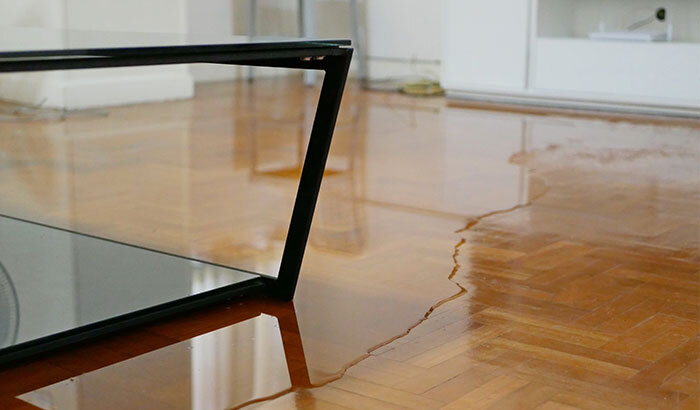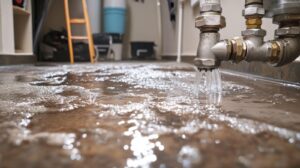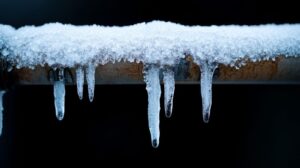In reality, water damage can quickly occur in your home with very little water. Many factors can determine how much damage will happen and how fast, but as a general rule, all excess water should be taken care of as quickly as possible.
Another critical factor is the humidity both outside and inside of your home. Humidity is the amount of water vapor present in the air and can be a catalyst for water damage in your home if not properly maintained inside your home.
Most water damage is a result of flooding or leaks, neither of which can be anticipated, so they often catch us unprepared. If these problems are not identified and resolved quickly, your entire home can be at risk for damage and your household at risk for health complications.
We will address these issues and more, but first, let’s break down just how much water it takes to cause water damage in each of the following common circumstances.
- Flooding
- Leaks
- Clogged Drains
- Humidity
There are two main concerns when it comes to water damage — structural damage and mold growth. Both can be dangerous to your home and your household in different ways.
Flooding
Water damage can start within a few minutes of flooding and with as little as an inch of water. Obviously, the more water that floods into your home, the worse the damage will be. The same is true for the time the excess water is inside your home.
When flooding occurs as a result of a storm, you can take some preventative measures such as sandbagging. However, extreme storm flooding usually results in damaged property. If possible, any area that has been flooded should be thoroughly dried and disinfected within 24-48 hours.
This is especially true if the flood water includes sewage. All areas that have been in contact with the black water (water that includes human waste) should be considered contaminated and approached with extra precautions.
Carpets, walls, and ceilings may all require some additional effort and appliances to dry completely. Even if the top layer appears dry, it is crucial to ensure all the sublayers are dry.
This means pulling up the carpet and drying the padding underneath or removing ceiling tiles until they dry completely.
If you cannot dry the flooded area completely within 48 hours, there is a good chance that structural damage has occurred and should be restored professionally to ensure structural integrity and proper decontamination.
Leaks
Leaks can result from a variety of different circumstances. A damaged roof, unsealed window, a change in water pressure, or faulty plumbing fixtures are all examples of interior leaks that can cause water damage.
The biggest problem with leaks is that they often go unnoticed until after the damage has already begun. The smaller leaks can often be more destructive than obvious ones simply because they can leak water for much longer without being discovered.
Some signs that there may be a leak in your home are an increased water bill without a change in water use, bubbling walls or ceilings, a change in water pressure, or discoloration of water from pipes.
Mold and mildew are also examples of water damage that can often unearth a leak that has gone unnoticed. If an area of your home develops a musty smell, there is a good chance that mold has begun to grow and thrive off excess moisture present in your home.
Most water damage can be reversed if a leak is caught and resolved within a few hours. But even small, slow leaks can start to cause damage to your home in a matter of minutes. The biggest reason for this is that many leaks happen in the hidden layers of the construction of your home or in junctures where more than one layer of construction is impacted.
For instance, a leaking toilet can run down the toilet’s base and soak into the flooring and layers of materials underneath. If the leak is slow and small, you may not find the damage until a much wider area has been soaked through — this includes the floorboard juncture of the wall and floor or the drywall of the ceiling below.
Clogged Drains
Water doesn’t just collect inside of your home. Multiple structures on the outside of your house are designed to drain water efficiently away from your home. These include the gutters, drain pipes, downspouts attached to the roof, and the window wells surrounding basement windows.
Similar to leaks, these clogged drains are usually not noticed until after they’ve created a problem.
If your gutters become clogged, there is a good chance that water will collect and overflow during the next rain storm or when the snow on your roof melts. Instead of following the designed path to drain properly, water can flow over the side and collect on window sills or the ground near your home’s foundation. These areas are not designed to handle excess water, so flooding or leaks into your home can occur.
Humidity
Even water vapor in the air can cause damage to your home if the amount of excess moisture gets extreme. Humidity is measured by the percentage of water vapor in the air. To prevent water damage, particularly mold, the humidity level inside your home should not exceed 50 percent.
This can be challenging if you live in a very humid climate with a lot of rainfall. However, some great appliances can help maintain the proper humidity levels, such as dehumidifiers or air conditioning units.
If humidity increases for an extended period, there is a greater chance for mold to begin to grow since mold is found almost anywhere and needs moisture to grow. High humidity can also damage furniture, particularly pieces made of wood. Even your paint and drywall can be damaged if exposed to too much humidity for too long.
Black Diamond Water Damage & Restoration
Do you suspect there is water damage in your home or office? The industry experts at Black Diamond Water Damage & Restoration can help clean up the damage, restore your property, and prevent further damage from happening in the future.
Contact a professional for a quote today!
toto slot






